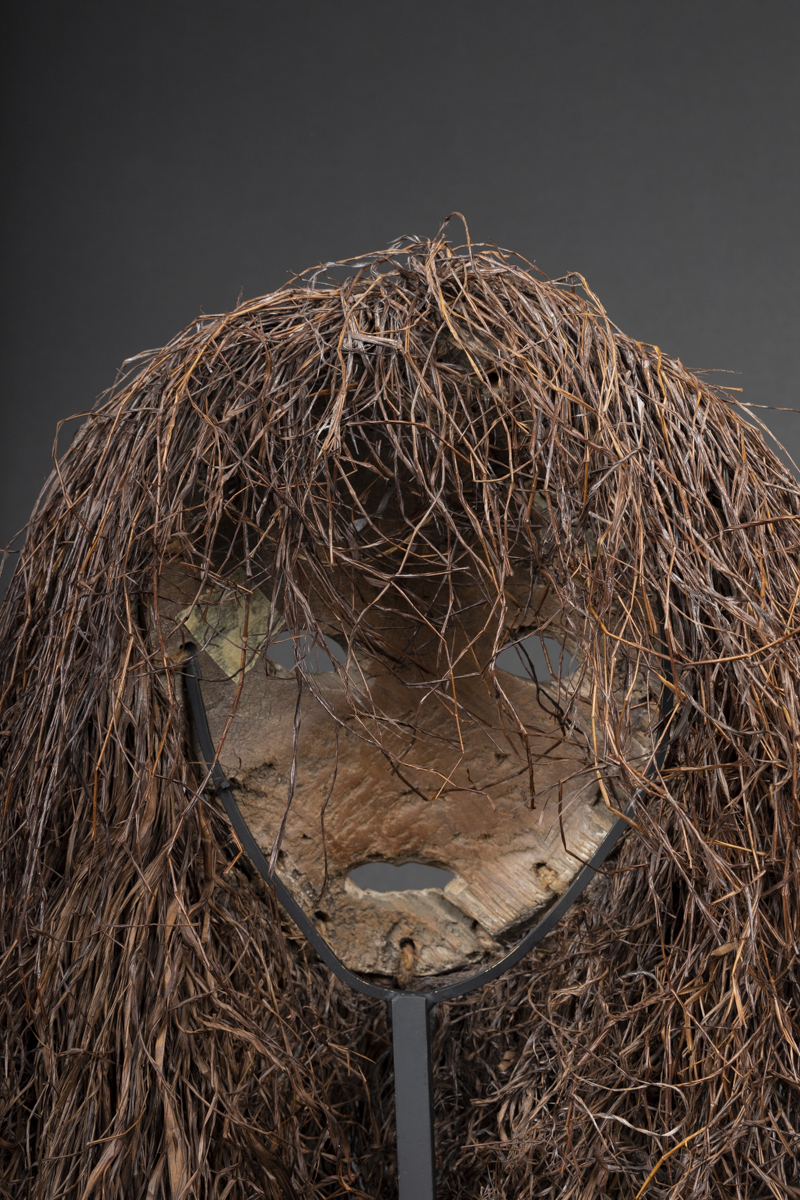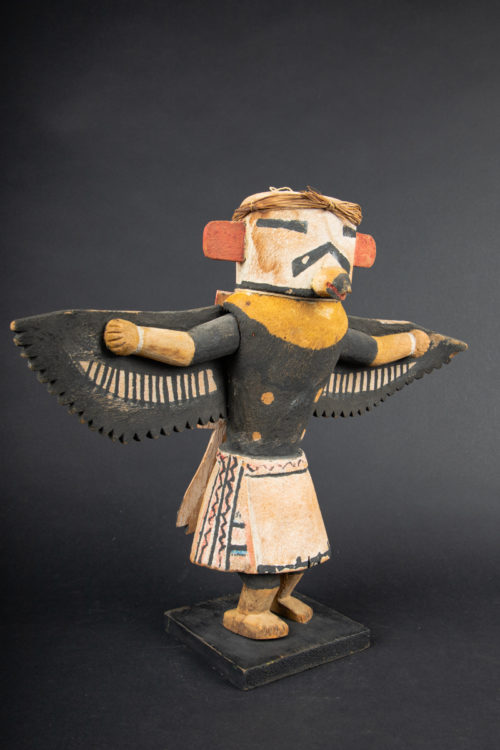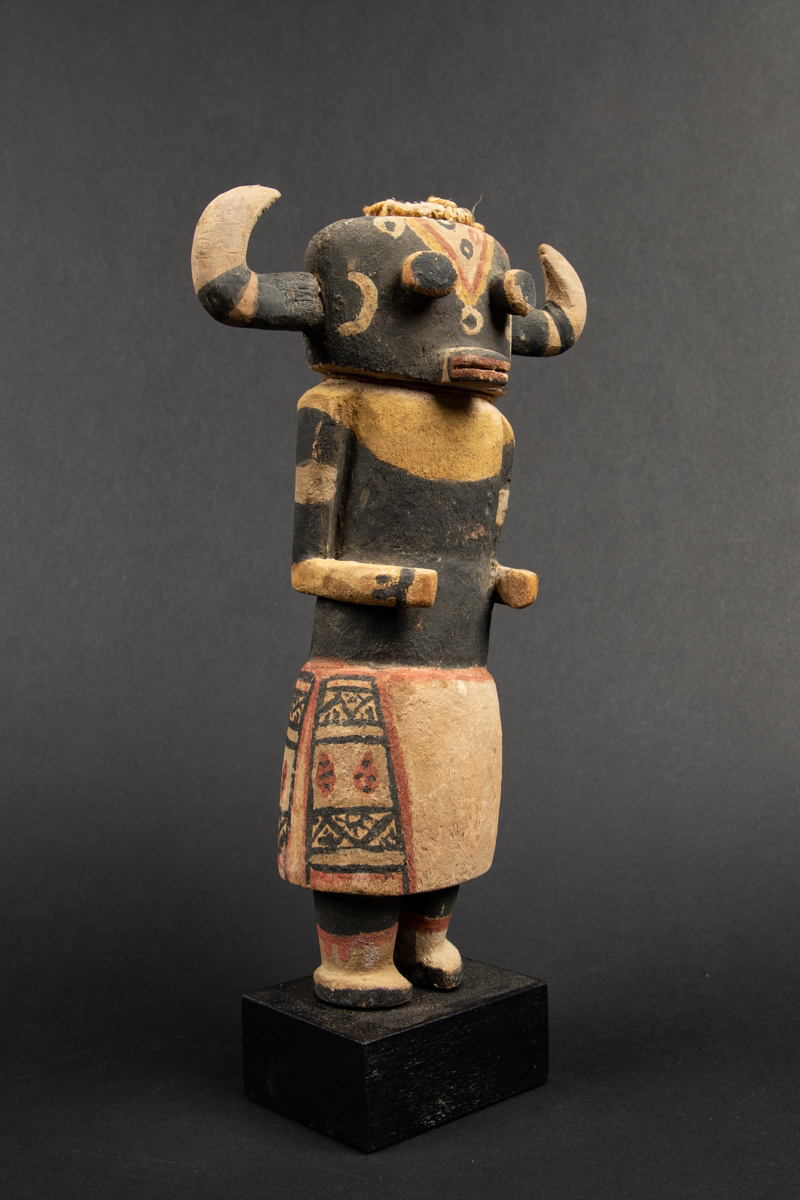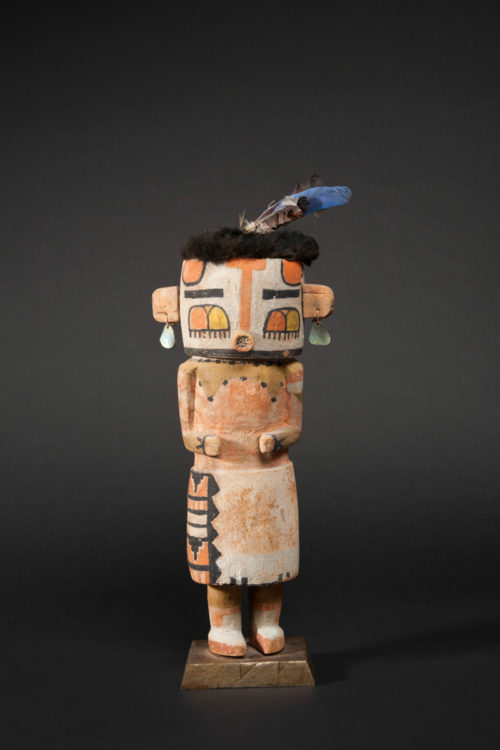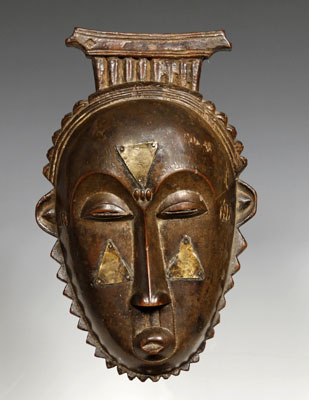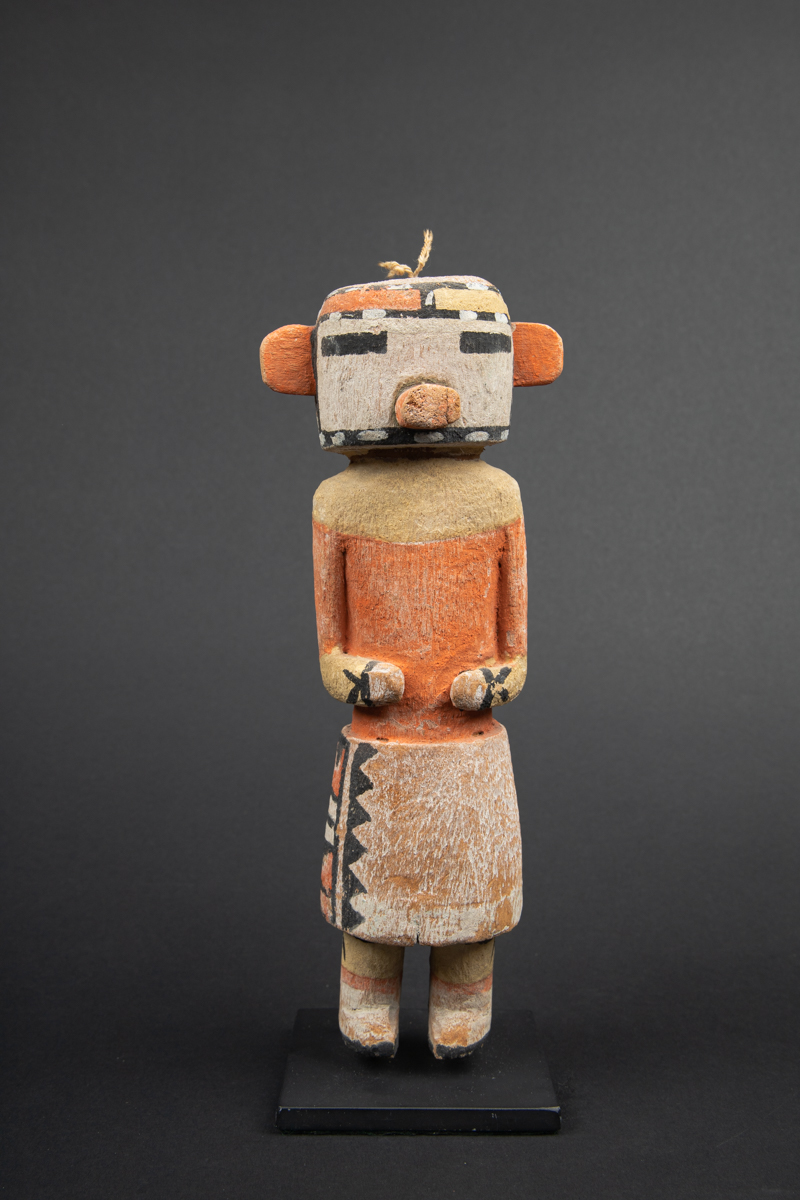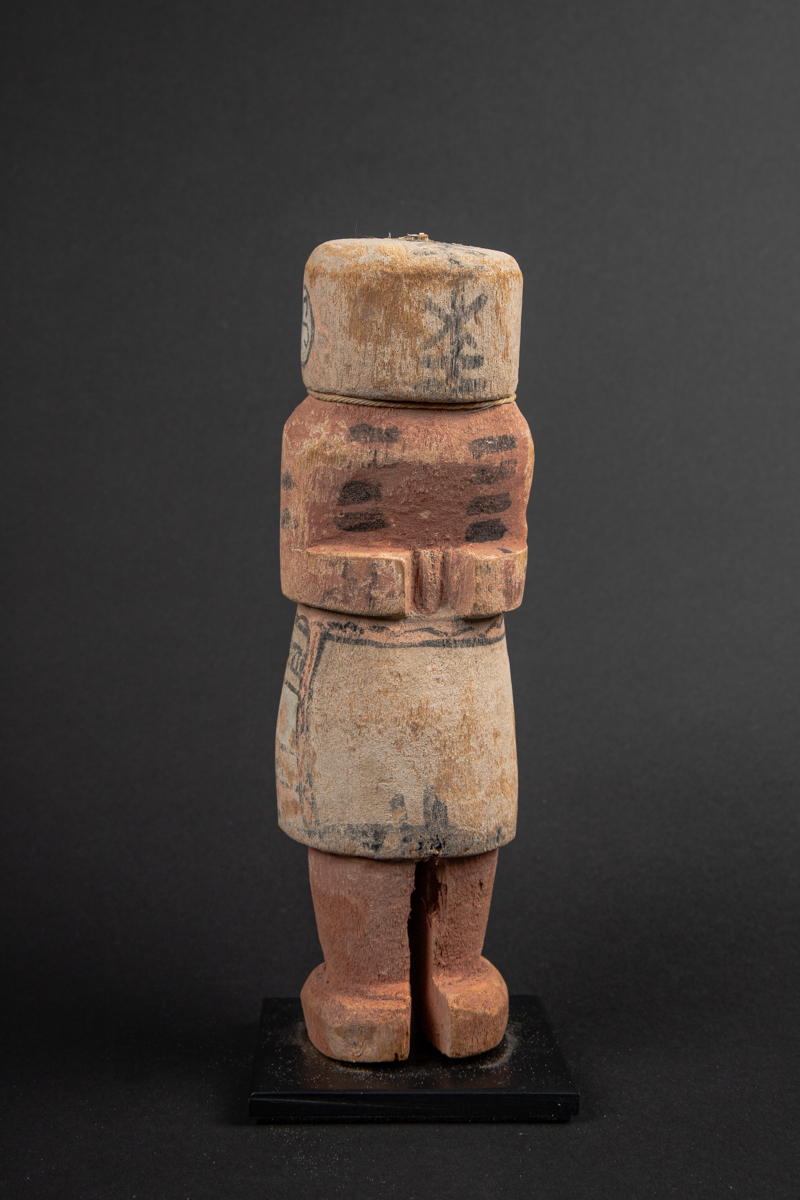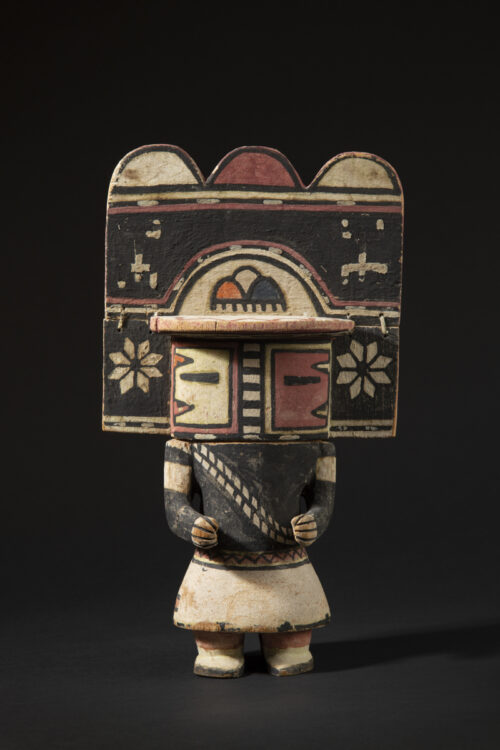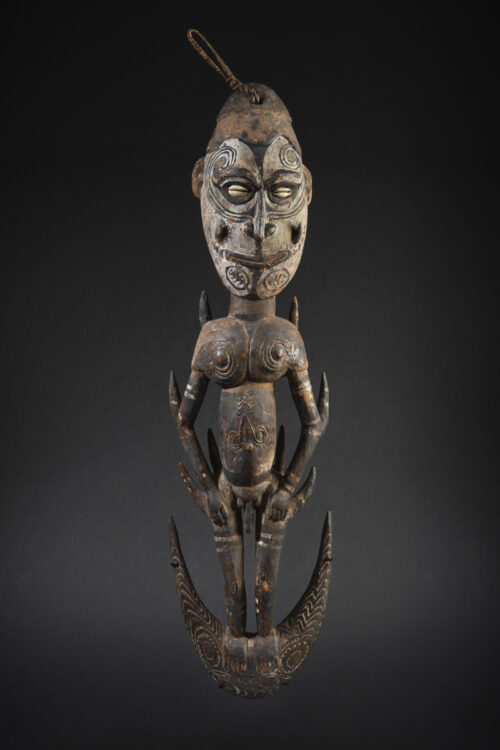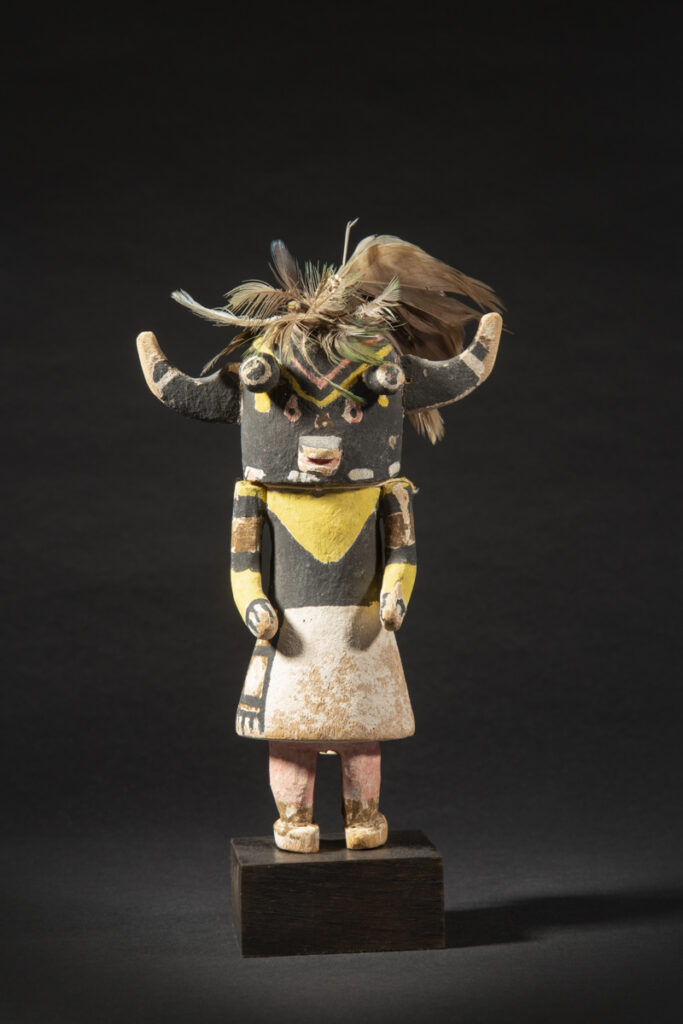Ituri Mask
Democratic Republic of the Congo
Ndaaka, Beke or neighboring cultures
Ituri Rainforest region, Northeast of the Congo
Carved wood, pigments and fibers
Early 20th century
Height (without the beard): 7 ½ in. (19.5 cm)
Provenance:
Ex collection Martha & Stuart Struever, Santa Fe
Ex collection Taylor A. Dale, Santa Fe
Ex collection Robert and Nancy Nooter, Washington, D.C.
Published:
Surfaces: Color, Substances, and Ritual Applications on African Sculpture, L. Kahan, Indiana University Press, 2009, pl. 2
African Arts, Vol. 38 Issue 2, Summer 2005, p. 81
Exhibited:
The African Art Museum of the SMA Fathers, Tenafly, New Jersey, 2004 – 2005
Virginia Museum of Fine Arts: on loan 2010 – 2018 (inventory number L.151.2010.1)
Ituri masks were virtually unknown or misattributed in museum and private collections until the late 1980s (see Ituri, the Distribution of Polychrome Masks in Northeast Zaïre, Marc Leo Felix, Munich, 1992).
These wooden masks were worn by young boys during initiation rituals. They embody ancestral or spirit figures in human, animal or hybrid form. They serve as instructors and guardians to the initiates. The various symbols painted on the surface are notably said to represent stars, rain, plant seeds or animal prints.









